Anglers Booking Team
The expert copywriters at Anglers Booking have meticulously crafted this article. Our dedicated team of writers provides valuable insights and information to enhance your angling experience.
 11 minutes read
11 minutes readSnook has long been regarded as an elegant species, often called a "linesider" because of the characteristic black line that runs along its body. However, it is also quite challenging to catch. It combines sharp senses, lightning-fast reflexes, selective feeding habits, and strength. To catch and retrieve it, you need solid fishing knowledge.
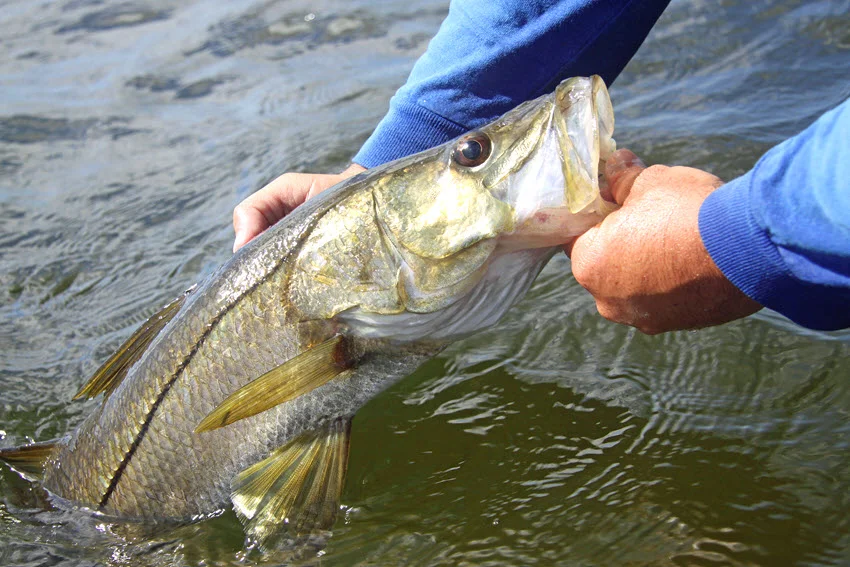
Regarding bait, Snooks are very voracious, but they won't eat everything. What are the decisive factors for Snook and his willingness not to or to hook on your presentation? It's not easy to answer! But we will try, so stay with us to find out what type of bait Snook prefers, how and where, and with what techniques to best present it all.
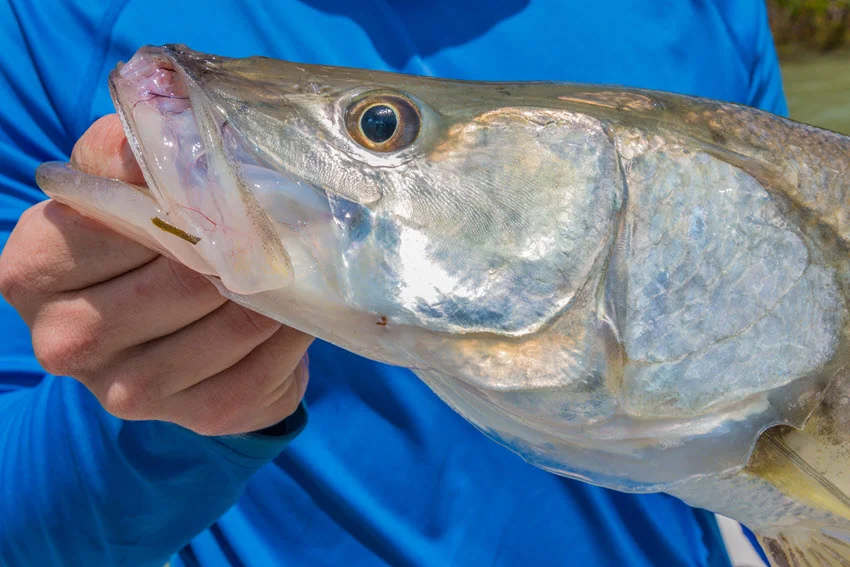
Snook conquers anglers with its elegant appearance, fierce strikes, and acrobatic fights. Known for its intelligence and keen instincts, the Snook is a stealthy predator that relies on ambush tactics to secure food. As a fish with a highly streamlined body for speed, a pronounced lower jaw is excellent for voraciously devouring small fish, shrimp, and crabs.
They also like to eat mullet, pinfish, and shrimp but will not hesitate to attack well-presented artificial lures. While aggressive, Snook are also highly sensitive to environmental changes. Understanding how they react to tide, light, and temperature shifts is key to choosing the right lure or bait.
Snooks are a species most commonly associated with warm, shallow waters where they can use structure and cover for ambush and protection. They range from mangroves and estuaries to coves, piers, and grassy plains and do not always behave the same.
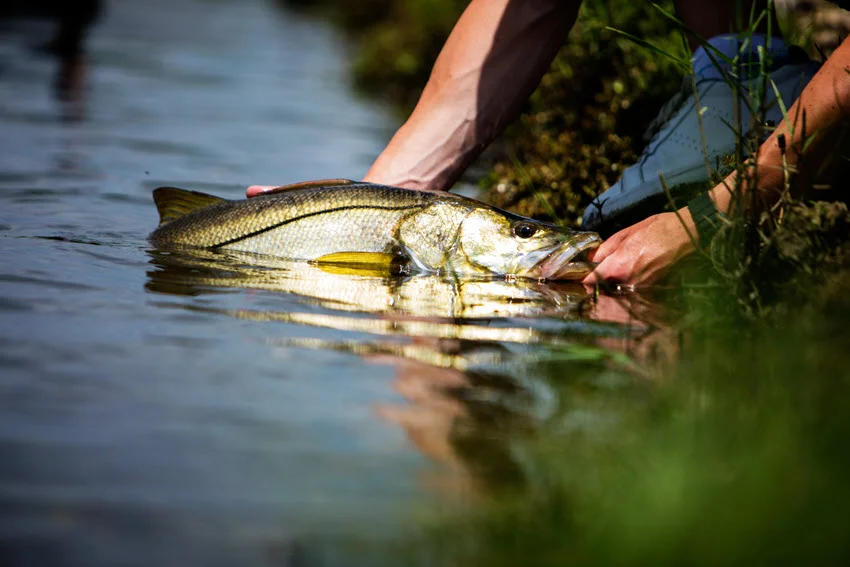
Snook usually position themselves in areas of fast currents, near submerged logs, downed trees, and dug-out riverbanks in rivers and streams, as these are excellent ambush sites.
Here, Snook waits for the current to bring him small fish, shrimp, and crabs. Although live baits work best here, you can also try artificial wobblers that imitate small fish.
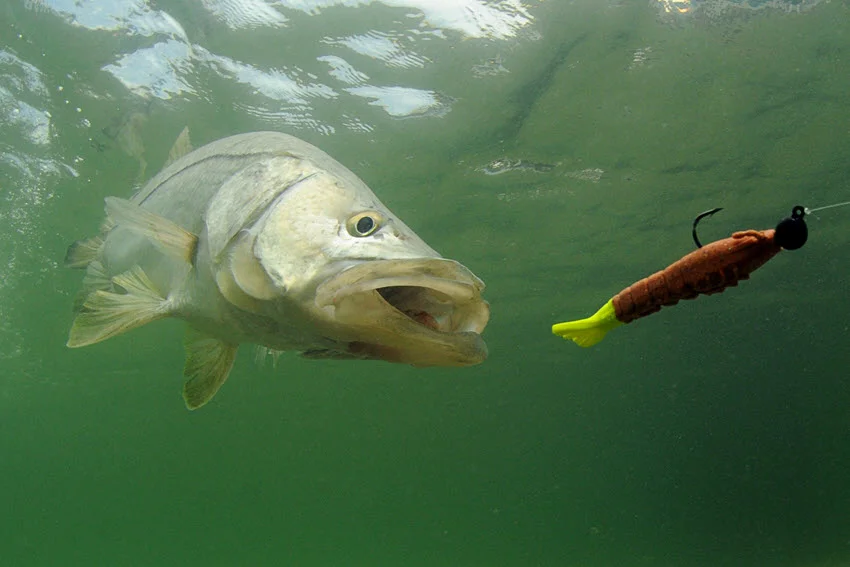
Mangroves and estuaries are favorite places for Snook to lurk. This is where you will find juveniles, as these are brackish waters full of juvenile fish and shrimp, creating a buffet for hungry Snook.
Mangrove roots, branches, and high tides are particularly productive as Snook ventures closer to shore to hunt. Therefore, the best option is to use live bait, such as shrimp, sardines, or mullet, especially in shaded areas.
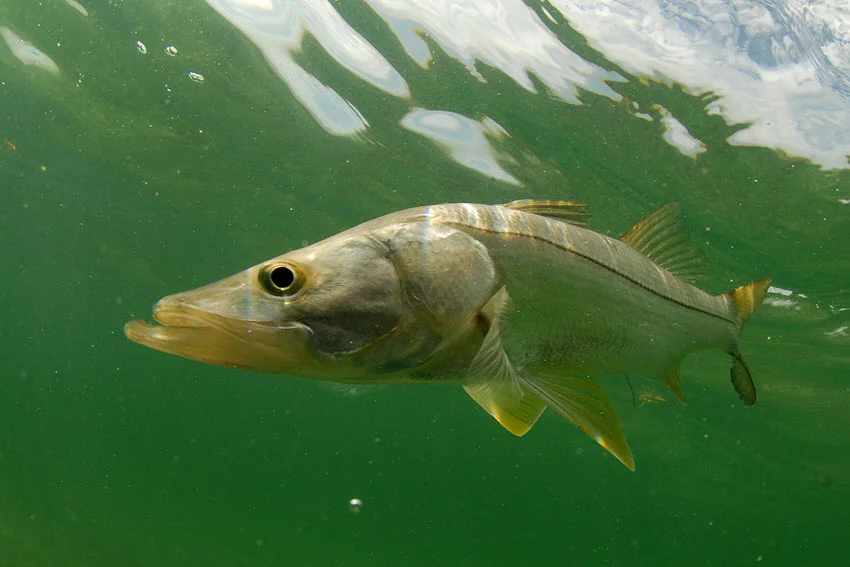
Some of the largest and most aggressive Snook are found in coastal waters. These are usually older woodpeckers hiding near jetties, piers, and rock structures.
During the summer, they will move into the surf zone, where the waves serve their favorite food and are incredibly productive at dawn or dusk. Here, of the live baits, sardines or herring work best, and artificial lures, soft plastic baits can imitate their natural prey.
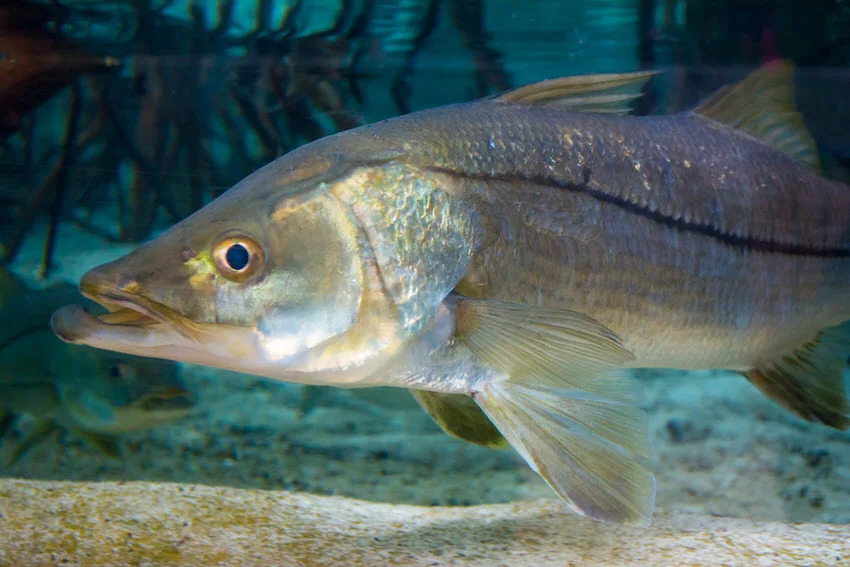
Brackish waters, a mix of fresh and saltwater and often lined with mangroves, are some of the most popular places to fish for Snook.
They also live there with shrimp, small fresh crabs, and baitfish, the most common food sources for these fish. You can experiment with bait, but live shrimp, mullet, or sardines are the best choices for these waters.
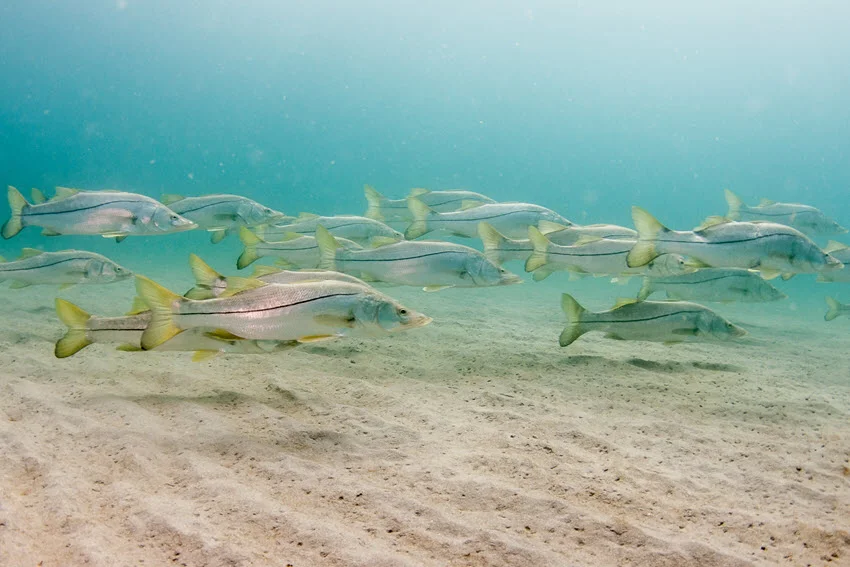
Coves and jetties are full of nooks, especially during tidal changes, as they act as natural funnels where the currents concentrate the bait. If you catch them here, focus on precise bait presentation and a firm grip.
Artificial baits, such as swimbaits, jerkbaits, or even topwater plugs, are a better choice than live baits because they can mimic fish movement and are resistant.
Snooks are a year-round catchable species, but they are also cold-blooded creatures, meaning their feeding patterns and activity levels are greatly influenced by water temperature. They prefer warmer water, with the morning and late afternoon feeding time when the light level is lower. They are sensitive to pressure changes and are known to feed more actively before storms.
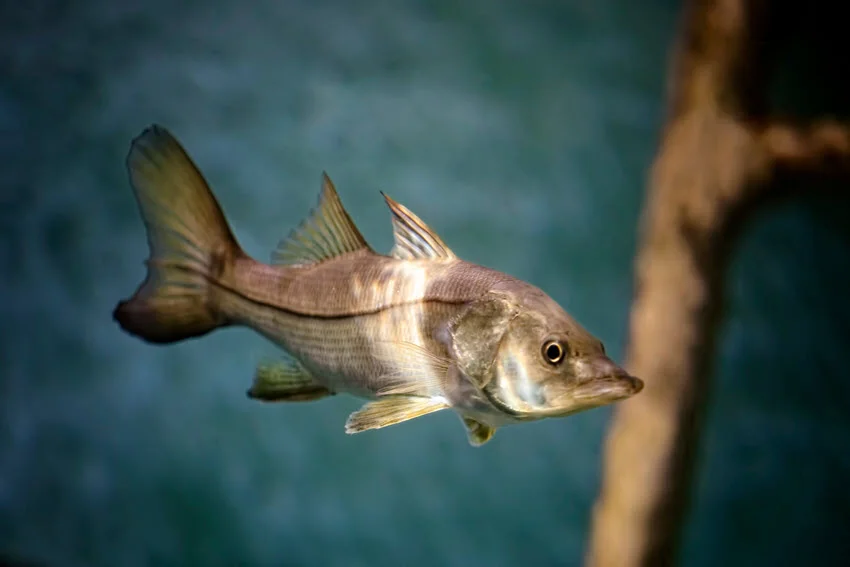
Snook behavior and feeding patterns throughout the seasons contribute to different fishing experiences. Each season, from spawning to migration patterns, allows different lures to be used.
As a fan of warm waters, with spring and the increase in temperature comes the period of more active feeding for Snook. Then, they move from deeper offshore waters to the shallows to areas around estuaries, mangroves, and coastal plains. In the Spring, Snooks spawn and gather in large schools near coves and coastal reefs. Live bait such as mullet or pilchards is great when Snook eagerly fatten up before the spawning cycle.
Summer is the peak of Snook fishing because the warm waters provide ideal conditions for developing this species. However, Snook are most active in the early morning and late evening, and during the day's heat, they will retreat to deeper water or seek shelter in shaded areas.
During the fall, Snook are more active around the coast and often migrate back to deeper water to prepare for the colder months. Fall is a great time to target Snook, as they feed more aggressively to gather energy and can be found in various habitats, from coves and jetties to shallow mangroves. They can be caught relatively quickly with smaller artificial lures.
During winter, Snook tend to be relatively calm as lower water temperatures slow their metabolism. However, they can still be found in warmer spots like mangroves and deep water channels, where they seek protection. Although they feed less frequently, Snook respond well to slow, subtle presentations of live bait such as shrimp or mullet. With precision and patience, fishing can still be productive.
Snooks are fascinating because of their quick reactions and ability to recognize every detail, which means that only the right choice of bait can attract this wary fish. Below, we present the best live baits, the first list of options to attract and break Snook's doubts.
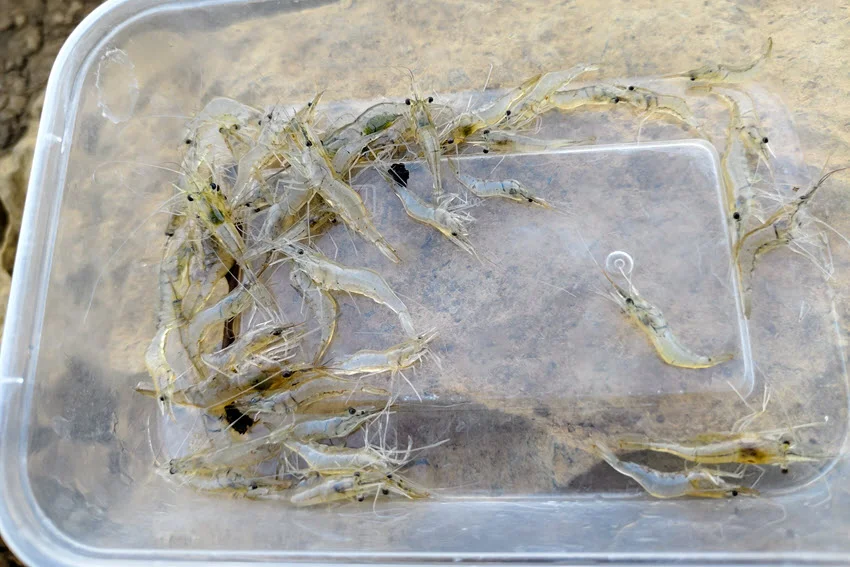
Live shrimp are the gold standard for hunting these fish. Mobile and fragrant, with a good presentation, they will be irresistible to this cautious predator. Hooking them through their tail or under their head is best in estuaries, mangroves, and near bridges, allowing for more natural water movement.
A slow presentation is a good option, especially in calmer waters, where the Snook have time to evaluate the prey. They are great for regular use in spring and autumn, but also in summer in cooler parts of the day.
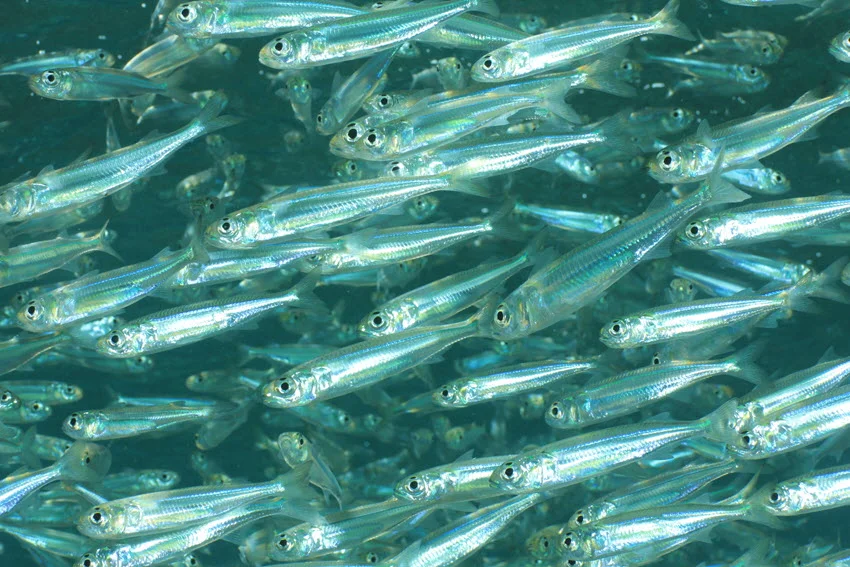
Small baits like pilchards, sardines, or small mullets are a natural part of the Snook's diet, so it's no surprise they attack them without hesitation. The bottom line is to fish for the exact species that are local to the Snook's habitat, as authenticity plays a considerable role.
They are suitable for catching Snook around structures such as jetties, rocky banks, and mangroves. Swimming naturally in the current, they are very effective during dawn and dusk, when Snook becomes significantly more aggressive.
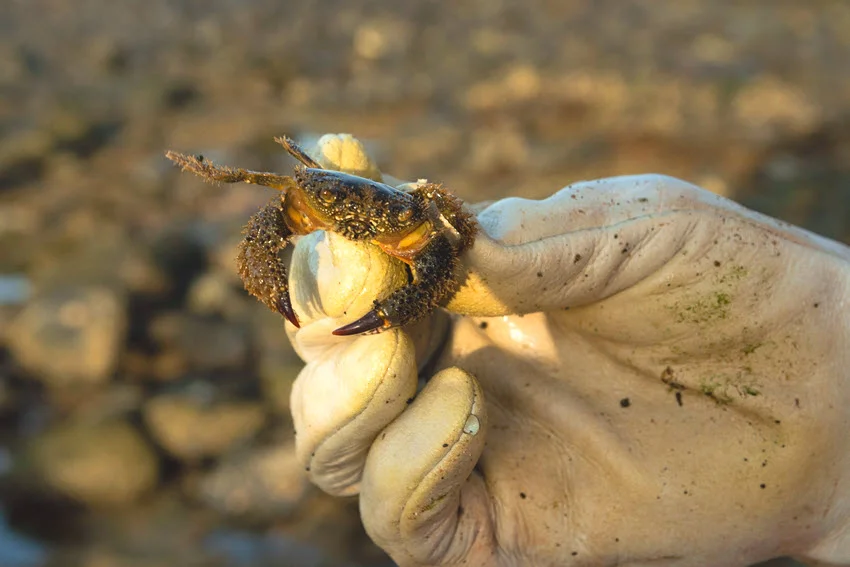
Crabs are often on the menu of Snook, especially in areas dominated by estuaries and mangrove forests. These small delicacies attract this fish thanks to their high nutritional value. If well presented, crabs irresistibly resemble prey. Crabs should be caught in calm waters, near bridges and docks, using bottom fishing techniques.
They are mainly proportional to their size, so smaller crabs are effective during the day, while larger ones can attract the attention of trophy specimens. The more pungent smell of the crayfish can help shake the Snook out of their typical wariness.
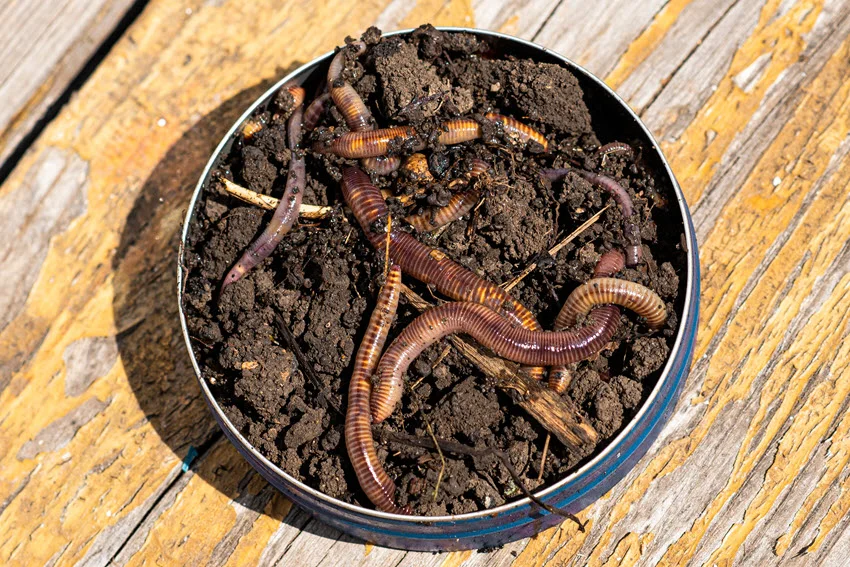
Although eels are not used often, they are highly effective bait for hunting large Snook. Their twisting and moving wildly attracts the Snook and encourages its aggression. They are good bait for luring Snook into deep channels and near structures like bridges or rocks, where they like to hide in the shadows.
Placing the hook close to the head will maintain a natural presentation and further increase the eels' appeal. They are also suitable for those who like to fish at night and for more extensive and older Snook.
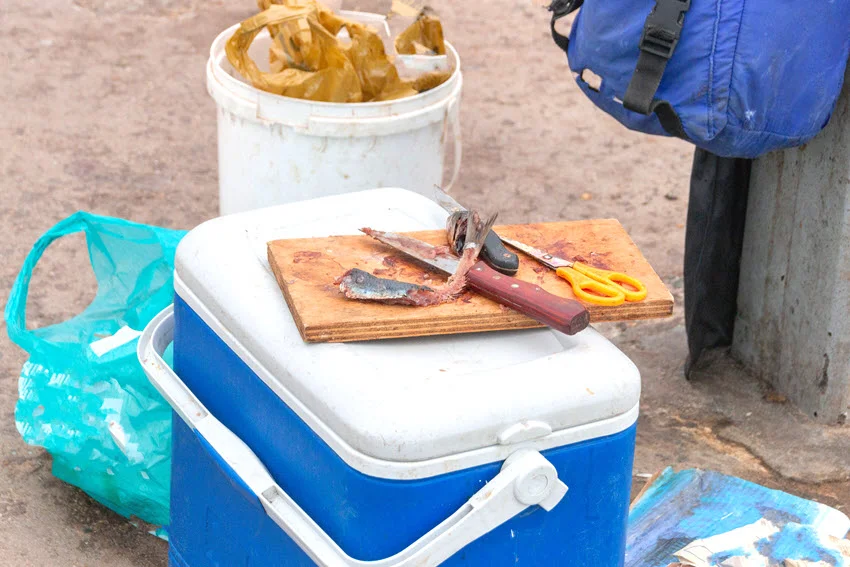
For the Snook bait to be effective, it does not have to be alive. Pieces of fresh fish, such as Ladyfish or sardines, will do well. Strong scents will attract his attention and are especially useful when the Snook is less active and needs an extra incentive to bite.
They are best used in muddy areas, near canals and bridges, where Snook hunt for prey. You can mount them on circular hooks. In addition to being effective, pieces of fresh fish are also practical because they are easy to prepare and use. Their simplicity and authenticity make them an indispensable choice for many experienced anglers.
It is always a good idea to use both live and artificial lures when Snook hunting. Artificial lures have many advantages, and in some features and presentations, they are even better than live ones.
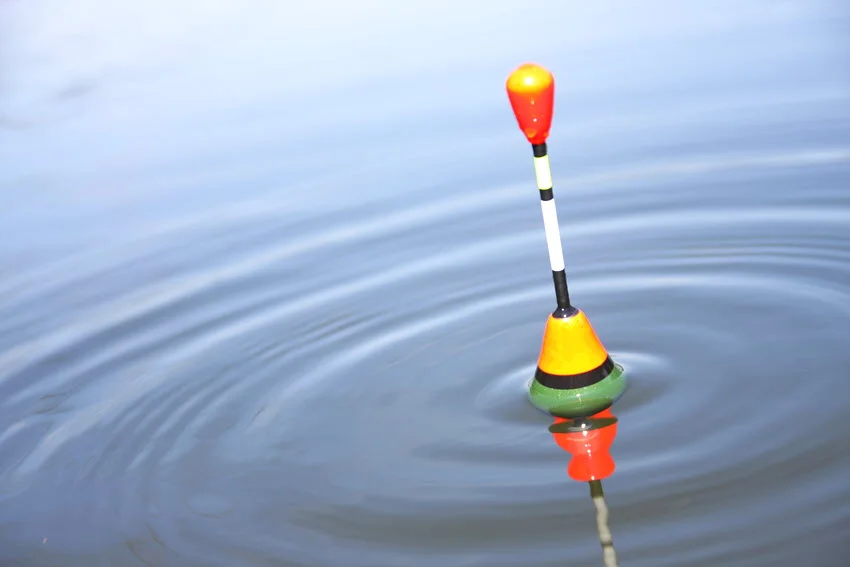
Always interesting and dramatic, they will put on a real spectacle for Snook, as they can attract the attention of even a lethargic Snook at dawn or dusk. The best presentation technique of topwater baits is in the pulling technique – using a "walk the dog" movement or light jerks to create waves that irresistibly imitate wounded prey.
They are especially effective in calm waters, such as bays and estuaries, where Snook frequently search for food. To attract Snook's attention, choose a model with reflective colors and jingling bells.
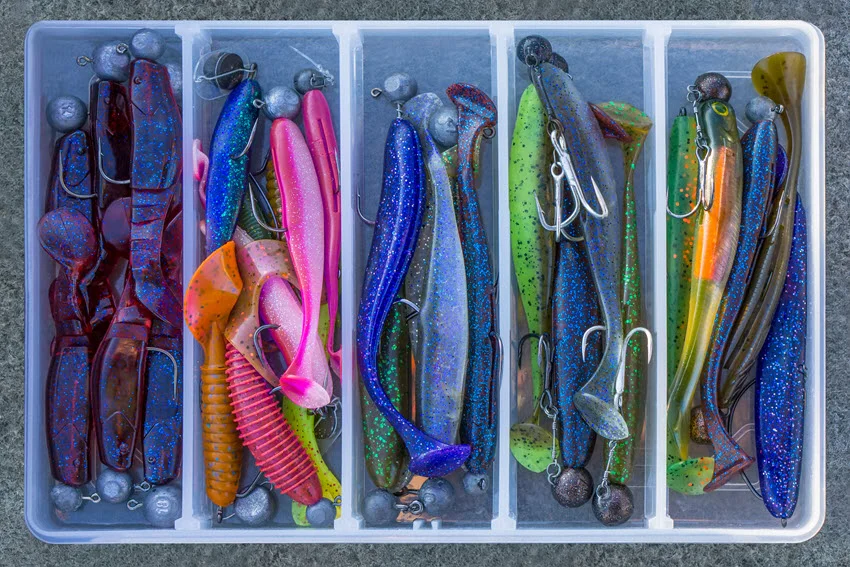
Classic artificial baits that work wonders for many fish, including Snook. Designed in fascinating and creative variations, from imitation shrimp to small fish, they allow anglers to tailor their presentation to suit water conditions and fish preferences.
They can be used with jig heads for deeper water, with or without weights, and for natural movement and ability. The added flavors make them ideal for choosy Snooks. They are best used near mangroves and shorelines with structures where they show their best.
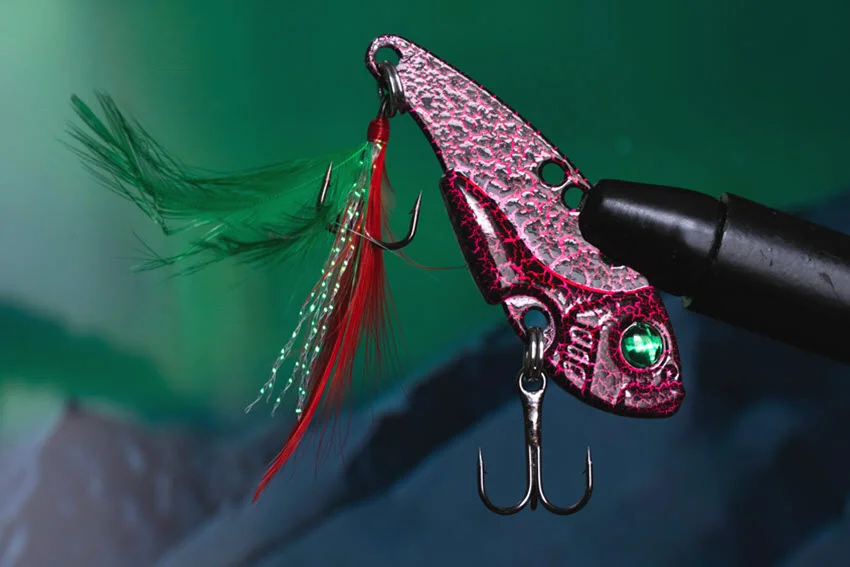
Crankbaits are an excellent choice for fishing for Snook in deeper water because they allow you to search large areas relatively quickly. These lures come in various sizes, including shallow, medium, and deep, making them perfect for adapting to different habitats.
They offer strong vibrations and reflective colors that attract Snook's attention, even in poor visibility. They are perfect for fishing near rocky areas, docks, and bridges, where Snook often hunt. To provoke them, combine a slow retrieve with occasional pauses.
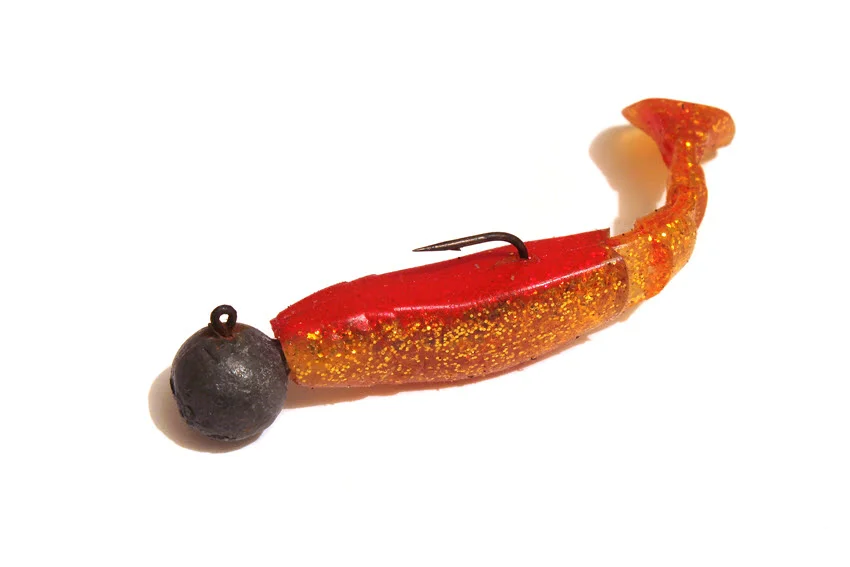
If you have located Snook near the bottom, jigs are one of the best options. They are extremely versatile lures that can be combined with various techniques, from slow retrieves to aggressive jerks.
You can also find them with feathers or silicone tassels, which will additionally attract attention with their movement in the water. Their main advantage is the possibility of precise placement at depth for fishing in canals and around buildings. In such conditions, pink, white, and gold are often the most effective colors.
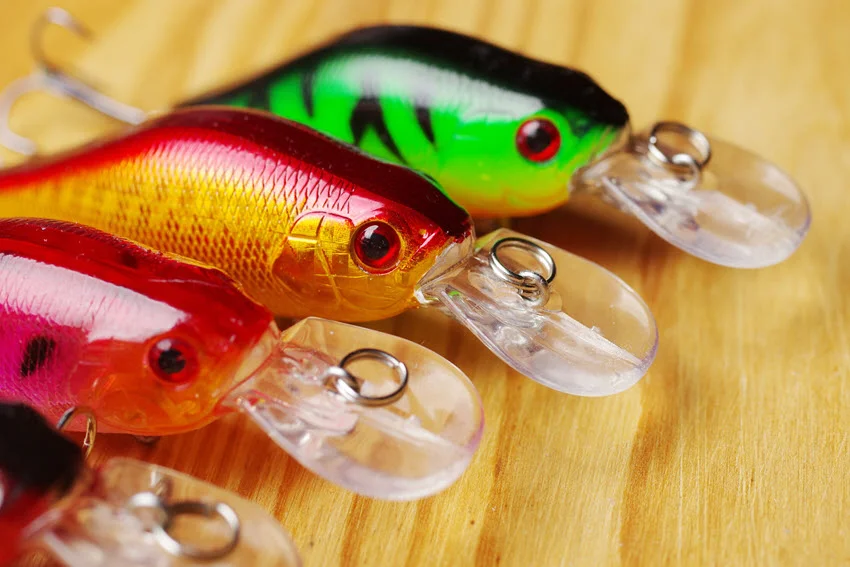
Minnow wobblers are designed to look like small fish, which is also Snook's main natural food. They can "float" in the water and thus easily intrigue a suspicious Snook. This is useful when Snook follow their prey for a long time before attacking it.
Minnows come in different colors and sizes, but the most popular are those in silver, gold, and transparent shades. The best presentation requires a pulling technique with pauses, and the best results are achieved in calmer waters of mangroves and estuaries and faster currents.
Although it looks calm and shy, this is all part of its strategy. Snook is cunning, strong, and capable of quick adaptations, making it one of the most prized trophies among anglers.
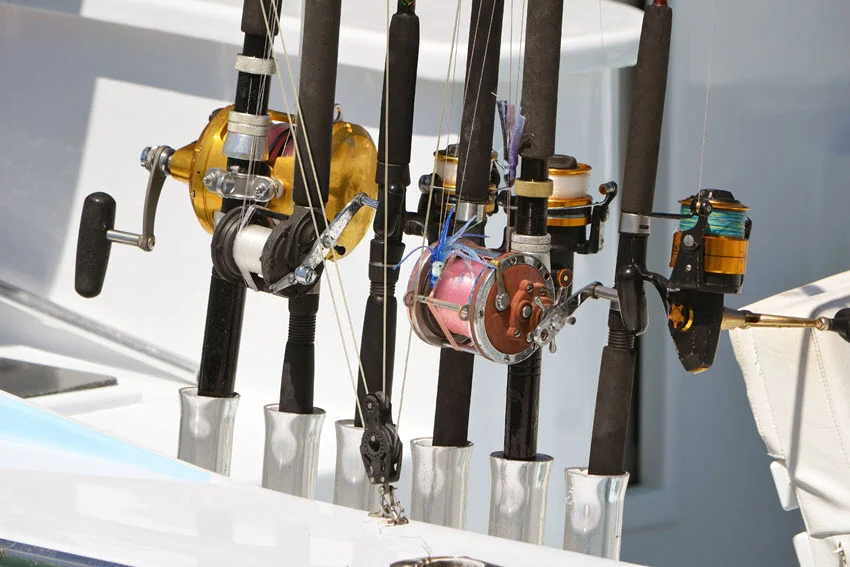
Snook fishing gear must be intense and precise, challenging to handle, and not betray at crucial moments.
Snooks are a symbol of challenge and reward in fishing. Depending on your desired size, they are never dull, sometimes even very demanding. They're excellent for beginners and provide an intriguing adventure for experienced anglers.
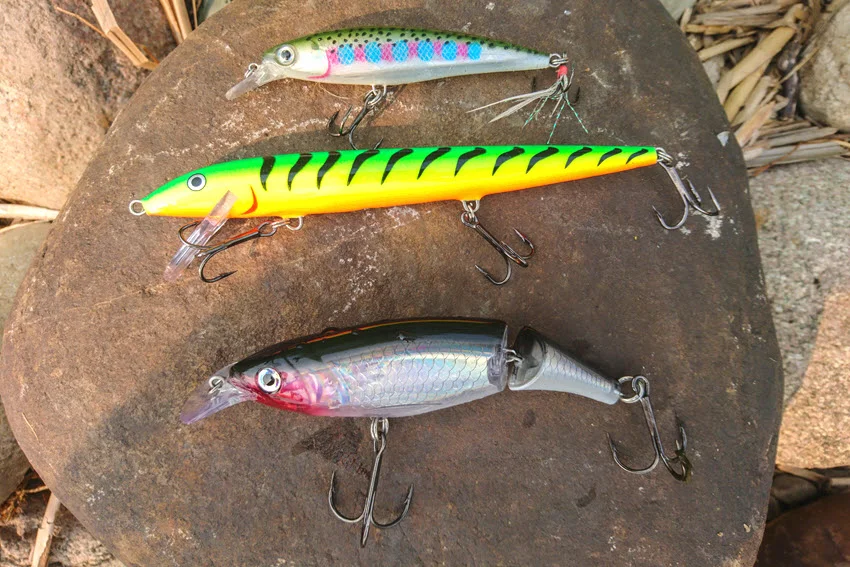
Since Snook is known for its pickiness, personalizing baits can significantly increase the chances of its trickery being overpowered.
The advantage of artificial baits is that they can be customized by changing their color and size and adding extensions like tails and sparkling beads. Shimmering colors, especially silver or gold, best mimic moving prey. If the waters are murkier, choose darker shades or add sounds or reflective elements.
Snook fishing is affordable and relatively accessible. It still offers enough challenge if you fish wisely and carefully. This also means you can use a variety of techniques, like bait fishing, which should be adapted to the specific habitat where you are targeting Snook.
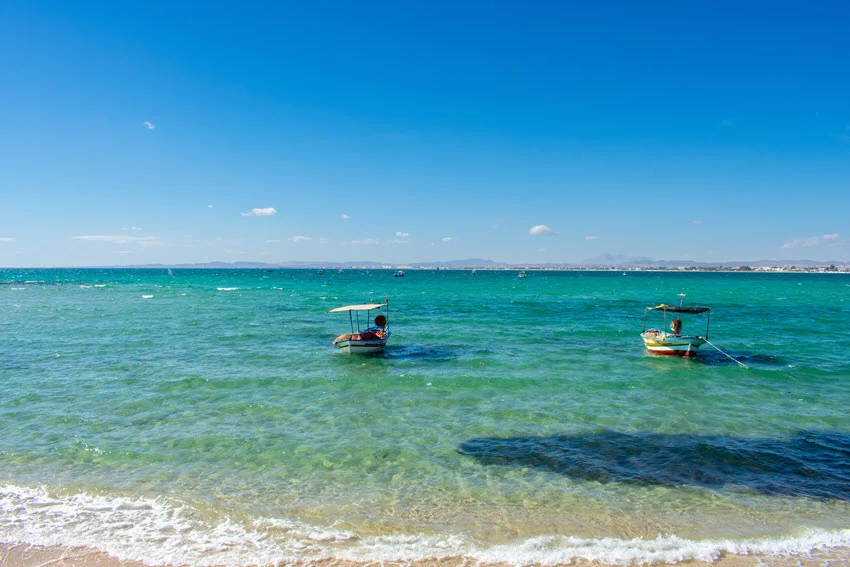
An intriguing technique both technically and visually, sight fishing relies on visually finding fish in clear waters, such as shallow coastal areas, mangroves, and sandbars. Whether done from a boat, kayak, or wading, sight fishing must be extremely quiet and inconspicuous so that the fish are not spooked. In addition to controlling the vessel's body, the essence is casting with natural or artificial bait and high precision.
Sight fishing is especially effective in the morning and evening. It requires experience in fishing and concentration, but although very intense, the reward can be a unique fishing experience.
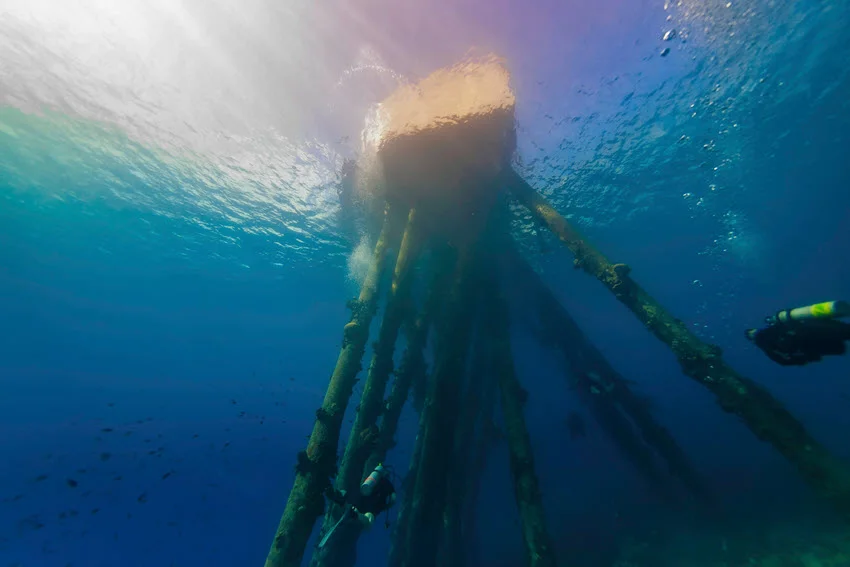
As fish that like to hide and ambush, structures such as docks, bridges, and submerged rocks are perfect for Snook fishing. The challenge is to place the bait as close to the structure as possible.
Jigs and live bait, such as shrimp or small fish, are good options here. However, you must be careful not to get the line tangled in obstacles and be ready to react quickly, as Snook often bites hard and immediately tries to run for cover.
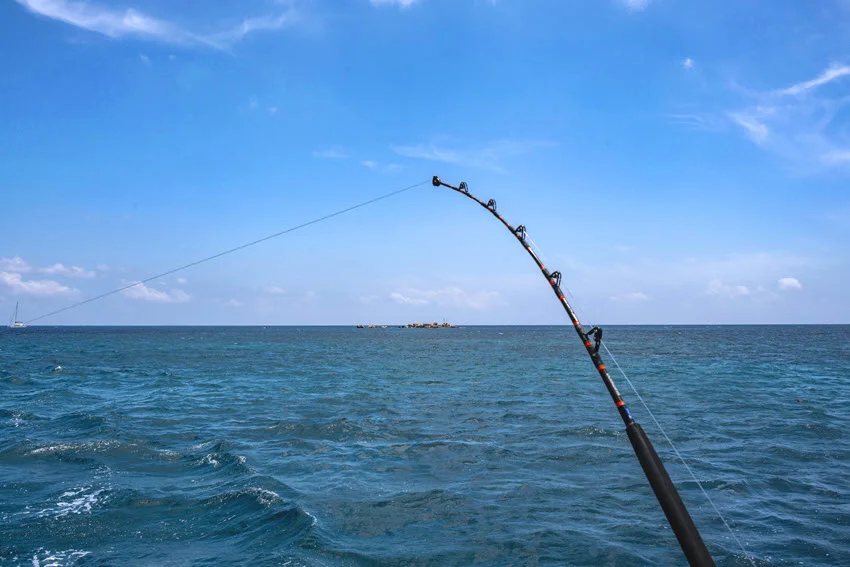
Trolling is a good technique for catching Snook in deeper water, such as canals and estuaries. It involves dragging a lure, usually a wobbler or artificial shrimp, behind the boat at a slower speed to fish. The key to success is placing baits at the proper depth and tracking the fish's movements with help, preferably with the help of sonar.
Trolling is effective when Snooks are migrating or moving more actively in search of food. Trolling is usually aimed at larger specimens, and once it bites, the fight is intense because it is often larger specimens.
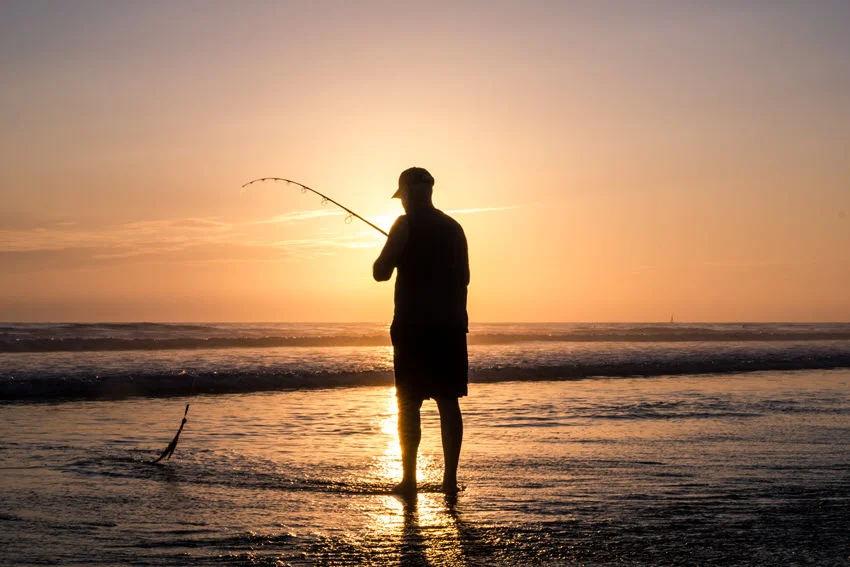
Snook fly fishing can be a truly unique performance and is an art. You must carefully select flies that perfectly mimic the Snook's natural food, such as small fish, shrimp, or crab, and target them in shallower waters where the Snook can be seen and targeted.
The approach must be a light catch and a careful pull of the fly to imitate the natural movement of the prey, but at the same time, quiet and patient, because the Snook reacts quickly to any noise or unnatural presentation of bait. Although fly fishing is challenging, especially for beginners, it is one of the most rewarding techniques for connecting with the fish.
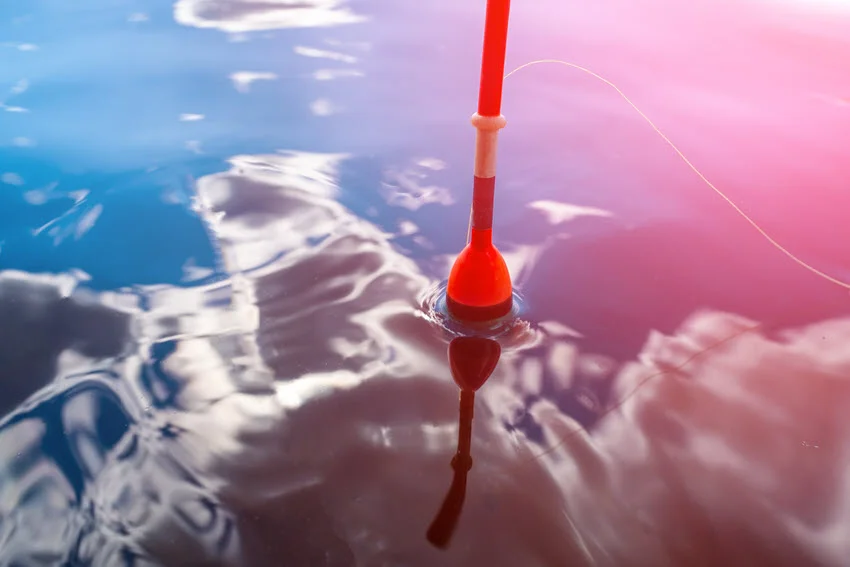
When targeting Snooks close to the surface, fishing using surface wobblers, poppers, or "walking the dog" can create a real spectacle. Known for its aggression toward specific movements, Snook cannot resist the challenge of attacking a bait that simulates an injured prey.
The water must be calmer, and the morning and evening hours are best. Silence, peace, and good concentration are essential because the angler must carefully monitor the fish's reactions and be ready for an explosive attack. In addition to precocity, proper bait management is key to success, and the thrill of surface fishing makes this technique a favorite among avid anglers.
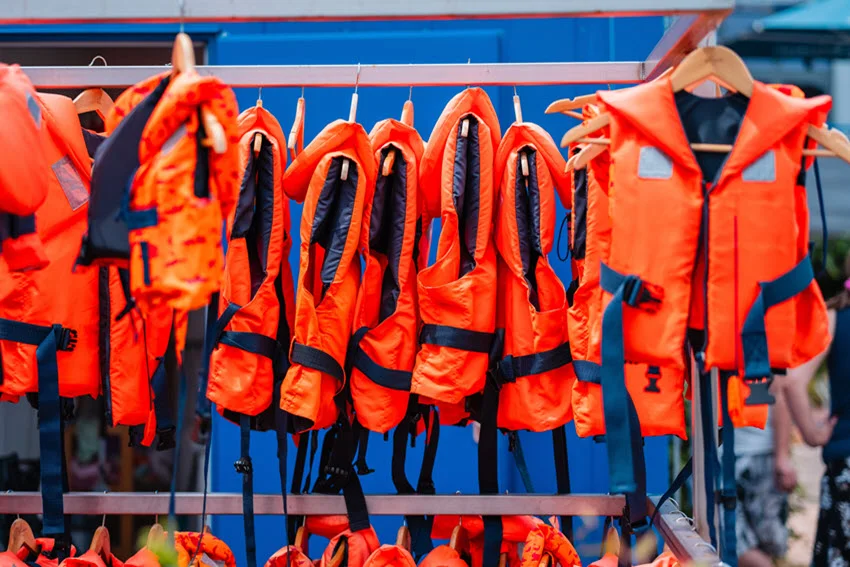
Snooks are not dangerous to fish, but often stay in risky locations. To avoid focusing on safety considerations, insure yourself in advance.
Safety must be a priority, whether fishing or going to remote locations.

Understanding fishing regulations and ethical practices about specific fish species protects fish populations and ecosystems and promotes responsible angling practices.
Anglers Booking team
Snooks are vital to the marine ecosystem, and many areas try to balance fishing and conservation through seasonal bans, size limits, and daily quotas. Snook populations are generally not in danger, but like most fish in the food chain, they are monitored by NOAA Fisheries and the Florida Fish and Wildlife Conservation Commission (FWC).
It is also essential to have all licenses and permits. Sustainable fishing is always important, which means returning fish that are too small or in the spawning period and leaving the fishing spot cleaner than you found.
Although you could easily conclude that Snook fishing is static because that fish has such attraction and allure, the truth is that apparent patience and precision require commitment, as well as matching the choice of location with the bait. In the end, the bait is also a key element of your skill to choose and present it to the fish, and it is a skill within a skill.
We believe that these tips have helped you, and we would appreciate it if you would share your impressions and experiences with us in the comments, as well as any tricks you have for successful Snook fishing. We are eager to hear about your experience!

The expert copywriters at Anglers Booking have meticulously crafted this article. Our dedicated team of writers provides valuable insights and information to enhance your angling experience.
Embark on unforgettable fishing adventures with us at Anglers Booking.
book your charterOctober 17, 2025
October 15, 2025
October 10, 2025
October 11, 2025
October 4, 2025
September 29, 2025
September 25, 2025
September 21, 2025

You're now part of our exclusive community. Get ready for premium content and updates straight to your inbox.
close
Subscribe to our newsletter and receive a selection of cool articles every week.
Please enter a valid email address.

Be the first to know when we're back in action.
Please enter a valid email address.
Leave a Comment
Your email address will not be published. Required fields are marked *
Thank you for your comment! It has been submitted for review and will appear on the site shortly.